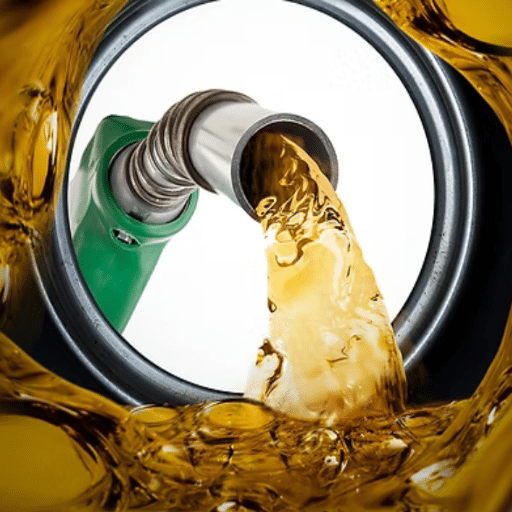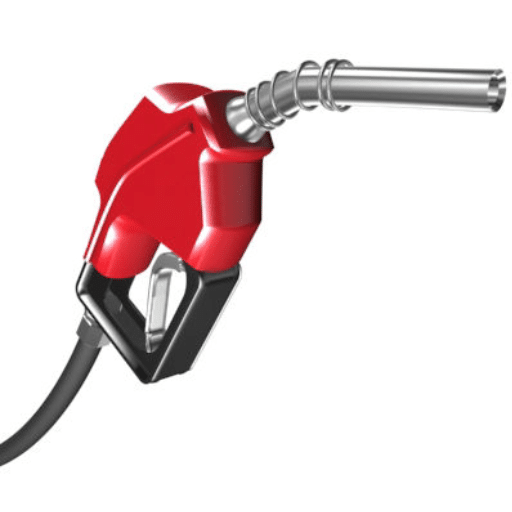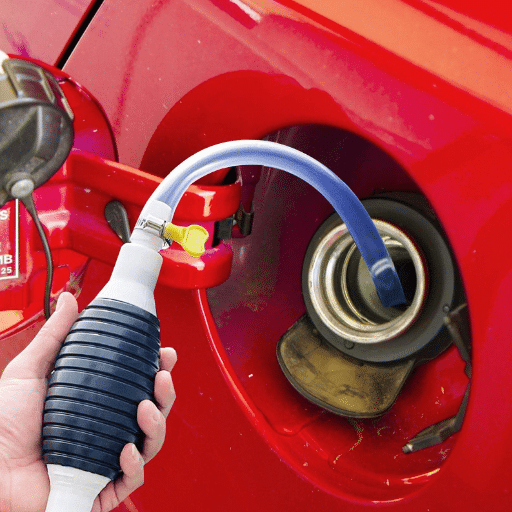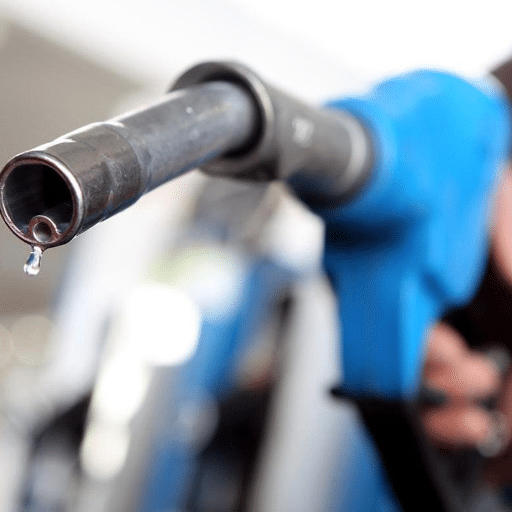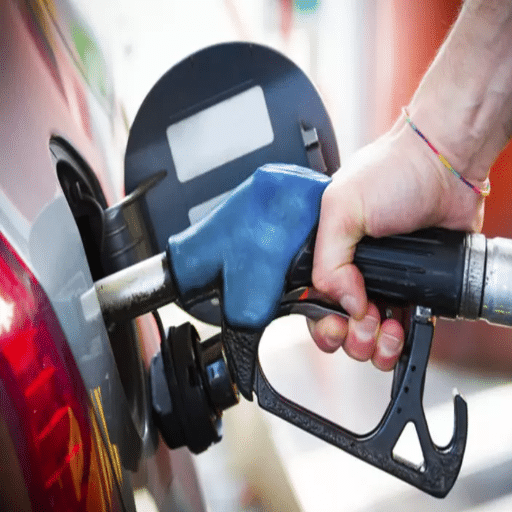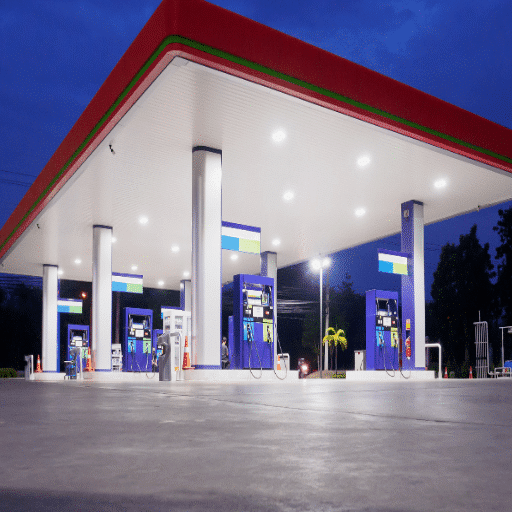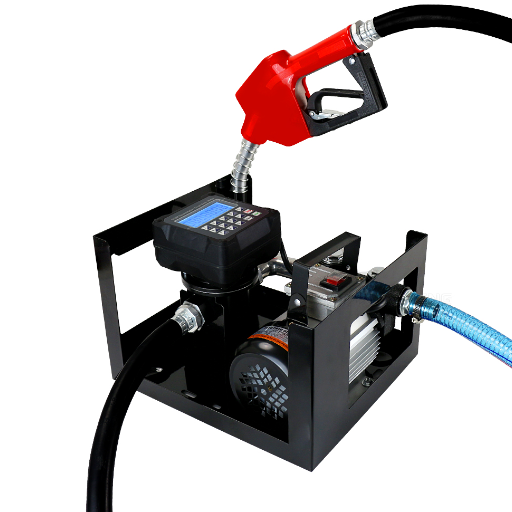Gas stations are a staple of modern infrastructure, yet their design often goes unnoticed as we come and go in a hurry. Have you ever wondered why nearly all gas stations are equipped with roofs? While their purpose might seem obvious at first glance, there’s far more to these structures than meets the eye. From protecting customers and equipment to enhancing safety and even addressing environmental concerns, the roofs of gas stations are a carefully considered element of their design. This article explores the multifaceted reasons behind their existence, highlighting their role in enhancing the experience for both drivers and businesses.
The Purpose of Roofs at Gas Stations
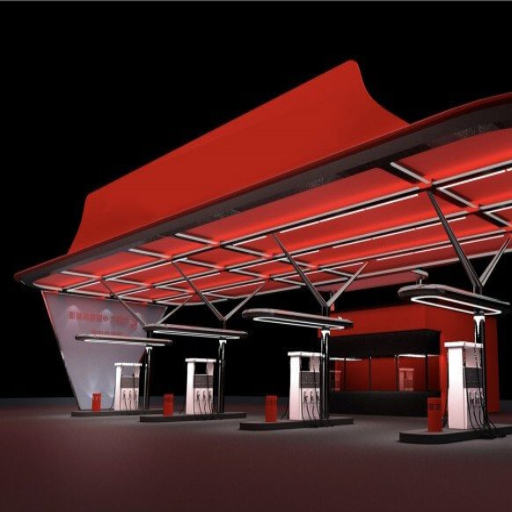
Protecting Customers and Equipment: One of the primary functions of gas station roofs is to shield customers, vehicles, and fueling equipment from the elements. In the rain or snow, hail, or intense heat of the afternoon sun, these canopies keep drivers comfortable enough to refuel at any hour. A few of these coverages will also protect sensitive fuel-dispensing equipment from environmental wear and tear, thereby enhancing the equipment’s lifespan and reducing maintenance costs.
Improving Safety: Safety is another critical concern. The roofs ideally feature lighting systems that illuminate the fueling areas at night or in poor weather conditions. Adequate lighting serves to deter criminal activities, thereby creating an environment that is safe for both customers and employees to operate in.
Environmental Value: Contemporary gas station roofs often incorporate design elements dedicated to ecological sustainability. For instance, some are engineered to contain stormwater runoff without excessive water accumulation efficiently. Others are to be fitted with solar panels so that the energy harvested there could be used to power the station. This demonstrates how environmentally sustainable solutions are being promoted within the fuel industry in recent times.
Branding and Aesthetic Appeal: Lastly, the design of the gas station roof is a key feature of the branding and aesthetic appeal. In this way, the various structures of gas stations proudly display their logos, color schemes, and signage, allowing the stations to be recognized far and wide. This aspect of branding is critically important not only to attract customers but also to maintain consistent brand recognition across multiple locations.
Roofs at gas stations are far more than functional structures-they are integral to providing a safe, comfortable, and visually appealing customer experience while addressing environmental and business needs.
Protection from Weather Elements
The roofs at the gas station have paramount importance in protecting the customers, staff, and equipment against the weather. They protect the customers from the glaring sun and UV radiation risks usually encountered during hot summer days, providing a more peaceful and safer environment. They also serve as protection for customers during showers, as slippery surfaces can sometimes pose additional hazards.
It has been observed that prolonged exposure to the sun or rain can worsen the condition of fuel dispensers and the electronic payment system. A good roof, one that is durable and well-designed, offers the least such threats and thereby enhances equipment life and reduces maintenance costs.
Keeping up with the demand for extreme weather conditions, modern gas station roofs are increasingly designed to cater to such situations. For instance, the materials and engineering used are such that the structure can withstand hail, high wind speeds, and even snow loads. Snow buildup can pose considerable stress on the roofs of gas stations, thereby posing a threat of collapse; however, the use of reinforced materials and snow-resistant designs safeguards safety and functionality.
Reflective rooftop coatings are part of the sustainable solutions offered, reducing heat absorption and resulting in greater energy efficiency and cost savings when cooling systems are in use during the hottest months of the year. These design features indicate that the roofing system is a crucial element for gas stations, both in terms of safety and efficient operational use.
Safety Considerations for Gas Pumps
The safety measures at gas stations take top priority, especially in the matter of using and maintaining gas pumps. The essential consideration in preventing static electricity build-up, which may cause violent sparks in the vicinity of highly combustible fuel, is correct grounding. Research reveals that static electricity cases are rare and that grounding equipment and static dissipators can mitigate most of them.
Another safety consideration is testing and maintaining pump hoses and nozzles to check for wear and tear that may eventually result in a fuel leak or spill. Research indicates that 53% of fuel station incidents are caused by equipment failure, highlighting the need for preventive maintenance measures.
Signboards and the instructions on how to operate the pump will also prevent user errors, ensuring that the equipment is handled safely. Emergency shut-off systems, as well as fire suppression systems, can be installed to enhance safety further. For example, automatic fire suppression systems commonly found in modern gas stations are capable of quickly extinguishing flames in the event of an emergency.
Environmental aspects, in turn, cannot be taken for granted. Vapor recovery systems capture gasoline vapors during fueling, thereby reducing air pollution and exposure to toxic vapors. That way, it protects the environment and ensures a breathable atmosphere for both customers and staff at the gas station. Safety practices play a crucial role when combined with technology, ensuring gas pumps operate with minimal risk.
Enhancing Customer Experience
Advanced systems and a prime focus on convenience constitute the foundation for delivering outstanding customer service at gas stations. Integrating self-service kiosks and utilizing mobile payment options has been beneficial for customers, as it speeds up the fueling process, resulting in a 30% reduction in average wait times at various modern sites. Likewise, with the considerable adoption of loyalty programs that work through mobile apps, it has been reported that stations with rewards programs witness a 20% increase in customer retention.
Clean and well-lit facilities convey a sense of comfort and security to visitors, especially at night. Studies have shown that more than 60% of customers consider station cleanliness when deciding on a location for fueling. Adding extra facilities, such as free air pumps, EV charging stations, or convenience store items, can enhance the customer experience while attracting a diverse audience.
Digital newspapers at pumps have become yet another effective means of communication and engagement, enabling customers to receive real-time fuel price information, weather updates, or discounts. Offering customer convenience paired with a customized experience will create a winning platform for loyalty and satisfaction in a growing and competitive environment.
Design Features of Flat Roof Gas Stations

Flat roof gas stations offer a modern and minimalist aesthetic, providing a clean and streamlined appearance. The flat roof structure, which favors solar panel installation, is another plus for promoting energy efficiency and sustainability. Furthermore, the flat shape utilizes sturdy material types that can withstand various weather conditions, thereby increasing longevity and reducing maintenance requirements. These are good considerations for flat roof design, as the most usable space will be available for essential utilities, such as lighting fixtures and signage, without crowding the entire layout. The versatility and practicality of flat roofs make them an ideal choice for contemporary gas station designs.
Benefits of Flat Roofs
Flat roofs have several advantages that make them a favored choice in modern architecture, especially in commercial establishments such as gas stations. The chief advantage is that they are cost-efficient. Since the design is relatively simple and requires fewer materials than pitched roofs, the flat roof typically costs less during both construction and maintenance. Moreover, these flat roofs provide ample space for other functional purposes—such as installing solar panels, connecting HVAC units, or building a rooftop garden—all of which contribute to energy efficiency and sustainability.
In modern terminology, flat roofs are highly durable when installed using materials such as EPDM, TPO, or PVC membrane. Such installations are highly resistant to UV radiation, extreme temperatures, and heavy rainfall. These would typically last anywhere between 20 and 30 years or more if maintained properly. Additionally, slight slopes on flat roofs enable water to drain well, thereby preventing water pooling and reducing the likelihood of leakage.
On the other hand, there is also flexibility in utilization, with the installation of these roof types being essential for an actual urban environment. Utilizing a flat roof is a practice that maximizes space utilization. These flat roofs are highly compatible with a flexible-use concept. For example, they can serve storage or ancillary purposes, supporting buildings or implementing a green energy scheme, such as solar. Solar utilization through flat rooftops has seen significant strides, with data showing that solar panel installations on commercial buildings can reduce energy bills by up to 75% in some jurisdictions. Hence, flat roofs are an innovative, environmentally friendly building concept.
Thanks to advancements in construction methods and materials, flat roofs today continue to excel in terms of functionality, cost, and environmental considerations—the very qualities modern buildings require.
Height Regulations and Compliance
Height control is a critical factor in ensuring the safety, aesthetic coherence, and compliance with zoning laws in urban planning. These respective height regulations could thus vary significantly by region, type of building, and its intended use. For example, many cities implement specific height limits on buildings to preserve their view of the skyline or to comply with airport zone laws. The Federal Aviation Administration, for instance, in the U.S., stipulates that no structure should be higher than 499 feet in certain areas around airports to dampen the risk to air traffic. In other cases, particularly in densely populated urban areas, shadow assessments may be conflated with height restrictions to guarantee adequate natural light to neighboring spaces.
Some regions have also adapted the height standards to favor sustainability, i.e., allowing green rooftops or solar installations on building limits. For example, Tokyo had altered height promises for specific areas to encourage energy-efficient building architecture. Different permissions, such as zoning permits and environmental assessments, are obtained, followed by periodic inspections to ensure compliance with all the conditions set out in the building requirements and to the satisfaction of local authorities.
Aesthetic Appeal and Branding
Aesthetics constitute an essential aspect of modern architecture, influencing public perception and the reputational enhancement of a building. Research suggests that, in buildings with biophilic elements, such as green landscapes or natural finishes, occupant well-being can be increased by up to 15%. Furthermore, creative façade design and lighting may improve the aesthetic appeal of a building while enhancing energy performance. Iconic structures like the Burj Khalifa or The Shard demonstrate how distinguished architectural design can elevate a city’s name, tourism, and cultural significance. Additionally, consistent branding, which involves incorporating a company’s logo or a defining theme into architectural elements, firmly imprints the message on stakeholders and visitors.
Environmental considerations for gas station roofs
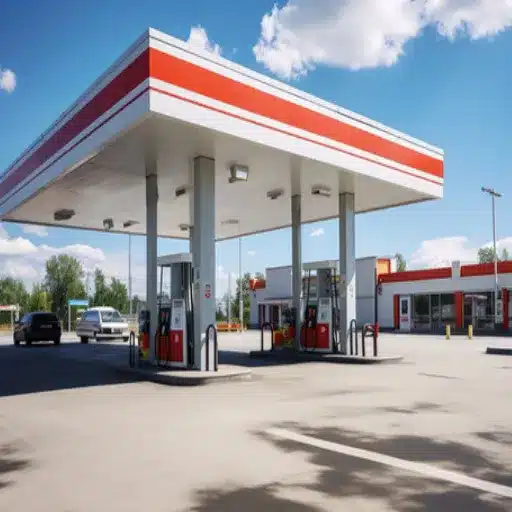
Architectural design of gas station roofs should be committed to minimizing environmental impacts. Solar panels can be used to collect solar energy for energy and water use, to reduce the carbon footprint. Green roof systems provide vegetation for insulation and to mitigate stormwater runoff. In addition, ‘ungreen’ or base-building materials should be chosen from sustainable and recyclable materials, ensuring that construction does not significantly harm the environment and has a low environmental impact throughout its life cycle. Alongside these, proper roof design can also take full advantage of natural daylight and minimize the need for artificial lighting. Prioritizing such aspects will ensure gas station roofs are both functional and environmentally friendly.
Energy Efficiency of Roof Designs
Energy-efficient roof designs play a crucial role in reducing energy consumption and operational costs. One such way is by utilizing reflective or “cool” roofing materials, which have been shown to lower roof temperatures by as much as 50°F compared to those of conventional materials. With this reduction comes a decrease in the amount of energy required for cooling, meaning 10 to 15% savings in the cost of air conditioning in commercial buildings.
Insulation is another crucial aspect of energy-efficient roof design. Using high-performance insulation materials, such as spray foam or rigid foam boards, significantly reduces heat transfer, thereby maintaining the desired indoor temperature. For instance, studies show that the best roofs can reduce the heat loss by 20 to 30% in colder areas.
Solar panel installation on a roof will further enhance its energy efficiency. Such solar-roofing systems produce renewable energy on-site, thereby offsetting a significant portion of the facility’s energy demand. According to data from the Solar Energy Industries Association, these solar-equipped commercial buildings save several thousand dollars every year, in addition to reducing carbon emissions.
Furthermore, green roofs, constructed with layers of soil and vegetation, serve as natural insulation to reduce heating and cooling costs, while also providing additional benefits, such as extending roof life through weather protection. Recent projections estimate that green roofs can lessen building energy consumption by as much as 25% in urban settings.
By combining cutting-edge materials with renewable solutions in roof design, gas stations and other commercial spaces can achieve significant energy savings while minimizing environmental impact.
Rainwater Harvesting Systems
Rainwater harvesting systems serve as capture mechanisms, collecting rainwater for various applications, thereby reducing the need to draw water from traditional sources. These systems typically comprise a range of components, including the catchment area (e.g., a roof), gutters that direct water flow, storage tanks, and filtration units, which ensure the production of purified and safe water for use. The harvested water helps with irrigation, toilet flushing, and the production of potable water through proper treatment.
Recent studies show that rainwater harvesting can lead to substantial reductions in water use in homes, with the magnitude varying depending on the size and efficiency of the particular system, and in some cases, exceeding 50%. For cities and towns, these systems are instrumental in controlling stormwater runoff, relieving pressure from drainage systems, and minimizing the chance of flood occurrences. It is inferred from studies that rainwater harvesting systems can save millions of gallons of water annually, thereby assisting in the sustainability of water-stressed areas. When coupled with modern filtration, these systems present a promising candidate to uphold water security on both large and small scales.
Impact of Roofs on Gas Station Operations

The roofs form a life-and-death element in gas station operations, as they provide shelter to the infrastructure, equipment, and customers from adverse weather conditions. They contribute to safety when designed well, as water could slip inside and onto the equipment, which is hazardous to workers and slippery for customers outside. In addition to water issues, they have a significant impact on operational efficiency through ventilation and shielding items from the scorching sun to prevent fuel degradation, as well as potentially reducing air conditioning costs. Variations in environmentally friendly concepts can be implemented on the roof, such as rainwater harvesting and solar panels, which collectively contribute to both economic and environmental performance.
Influence on Fuel Pump Functionality
Thus, roofs indirectly contribute to the performance and longevity of fuel pumps by yielding an environment that shields equipment from outside stress factors. Fuel pumps are susceptible to both environmental and operational aspects, with extreme weather conditions being a significant contributor to wear and tear. Fuel Pumps, Water ingress, and overheating problems can be adequately prevented by installing a roof over the pumps to protect them from rain, snow, and direct sunlight.
Moreover, roofs equally work best in maintaining good working conditions for the fuel pumps by contributing to cooling. High temperatures may lead to vapor lock, where excessive heat causes vapor bubbles in the fuel lines, hindering pump operation. According to studies, shaded equipment can lower surface temperatures by up to 25°F, thereby prolonging pump life and reducing repair bills.
Additionally, most setups provide for drainage near roofing, preventing puddles or standing water from forming around the fueling stations. Standing water can lay the groundwork for pump corrosion or contamination, adversely affecting their performance. Sustainable improvements, such as the use of reflective roof materials or integration with renewable energy installations like solar PV systems, contribute significantly to reducing fuel operations’ energy footprint and sustaining uninterrupted performance. These upgrades are indeed addressing the rising demand for economical and environmentally friendly fueling infrastructure.
Design Trends in Petrol Station Architecture
Modern petrol station design is increasingly focused on sustainability, user experience, and the integration of modular technology. The majority of contemporary designs incorporate green practices into their structures, such as utilizing energy-efficient materials and systems. For example, many petrol stations are nowadays equipped with solar panels on their canopies, thereby giving preference to renewable energy sources. Market figures reveal that petrol stations using solar energy incur up to 20% less operational expenditure and, at the same time, reduce their carbon footprint.
Another trend worth noting is EV charging. With increasing demand for EVs, many petrol stations are now being designed or retrofitted to include dedicated charging zones. Some designs aim to integrate EV infrastructure with fast-charging hubs, where vehicles can be charged in under 30 minutes, thereby providing a seamless driver experience.
Furthermore, modern architecture builds upon customer-oriented design by prioritizing accessibility, visibility, and amenities. Most stations today encourage an ambience of comfort with spacious retail areas, lounge spaces, and good lighting for safety and convenience. They are also brought to life through automated payments or app integration, which helps quickly complete transactions and improve efficiency.
Thus, past trends are prompting a reevaluation of the brand image of petrol stations, as they look to the kind of energy that the future will hold, with permanence, technology, and user-friendliness being among the primary criteria.
Case Studies of Unique Gas Station Roof Designs
Gas Station in Zaragoza, Spain: Designed by the architectural firm Rafael Moneo S.A., this gas station is a brilliant example of functionality meeting artistic innovation. The roof is a big, sweeping canopy, sculptural, and very futuristic, which marries aesthetic considerations with practicality. It is constructed from lightweight materials to ensure durability while minimizing environmental impact. Moreover, solar panels have been integrated into the station’s roof design, experimentally reducing its energy footprint by providing clean energy for its daily operations. The marriage of design and sustainability becomes a role model for gas stations today.
Orival Service Station, Belgium: The Orival Service Station catches everybody’s eye under its wooden roof design. The tapered, wave-shaped structure is crafted from timber, a renewable resource, which symbolizes the station’s commitment to environmentally friendly architecture. This unusual cradle-shaped construction provides adequate shade to reduce heat, enclosing a spacious resting area for travelers. The entire structure features LED lights with extremely low power consumption, which are activated at nightfall. It has hence become one of the cited instances where architecture allows for the blending of functionality and environmental responsibility.
Fuel Station by McDonald’s, Batumi, Georgia: With a single bold roof design, this futuristic fuel station combines gas station functions with a McDonald’s restaurant. The sleek glass and metal panels of the roof lend it an iconic triangular silhouette that starkly contrasts with the urban backdrop. By being semi-transparent, the roof ensures maximum harnessing of natural light and reduces energy consumption during daylight hours. The multi-purpose structure garners attention from the land-efficient thinking on how to use space and attract an increasingly diverse array of visitors.
ENOC Future Station, Expo 2020 Dubai, UAE: The ENOC fuel station at Expo 2020 Dubai embodies advanced technology and design. The rooftop features a sleek design with photovoltaic (PV) solar panels integrated therein, capable of producing approximately 180 kWh daily. Additionally, the roof features a water harvesting system that collects and recycles water for use in various operational functions, resulting in a 30% reduction in water consumption. This station features an advanced energy management system, representing the future concept of sustainable fueling infrastructures.
These case studies demonstrate the integration of advanced design, environmental consciousness, and technological innovations into the art of gas station roofing. These shall serve as benchmarks in the transformation of conventional fueling stations into a form of sustainable art.
Future Trends in Gas Station Roof Designs
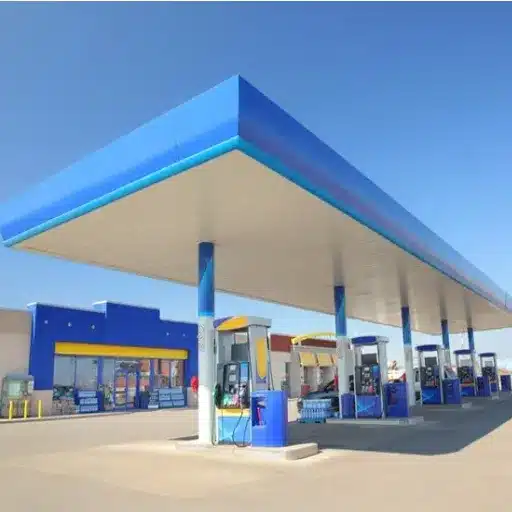
In the future, gas station roof designs will focus on sustainable energy, advanced technologies, and customer-friendly functionalities. Key trends are:
Renewable Energy Integration: Solar panels and energy-efficient roofing materials will be a significant trend, helping stations reduce their carbon footprint and generate power for themselves.
Green Roof: One interesting trend is the incorporation of vegetation on roofs for aesthetic purposes, while also insulating better against heat and funneling less heat outward in urban areas.
Modular and Adaptive Structures: From a modular perspective, designs will ensure easier upgrades and adaptability to changes in fuel supply. This is especially of concern with the rise of electric and alternative fuel vehicles.
Innovative Technologies: IoT sensors will track energy consumption, the need for maintenance, and weather conditions to put the systems in self-optimization mode, thereby enhancing their performance and lifespan.
As a whole, these trends aim to achieve the objectives of sustainability, energy efficiency, and an enhanced experience for both operators and customers.
Innovative Roofing Materials
New-age construction materials offer an opportunity for enhanced energy efficiency, increased longevity, and improved sustainability in the construction industry. For instance, solar roofs have become a much sought-after option lately. These systems integrate photovoltaic panels into building roofing materials, allowing buildings to generate renewable energy while maintaining a sleek appearance. Studies have shown that, depending on the quality of installation, solar roofs have the potential to reduce energy bills by up to 70% and have lifespans that exceed 25 years.
Green roofs, on the other hand, also help keep the urban environment calm with vegetation on top of them and provide insulation and stormwater management. Since green roofs can reduce rooftop temperatures by up to 40°F, the building can maintain its cool temperature, making it more energy-efficient and reducing cooling costs during warmer periods. Additionally, they contribute to energy savings by helping to purify the air from pollutants and fostering natural ecosystems.
Cool roofing protocol utilizes highly reflective materials to reflect sunlight, thereby reducing the amount of heat absorbed by the building. A cool roof can drop interior temperature by 10-15°F and reduce cooling energy costs by 10-30%, a win-win situation in any hot region.
Ultimately, these eco-friendly roofing options, which utilize recycled metal and synthetic shingles sourced from sustainable materials, do not compromise environmental values or durability. As a possible example of a recycled metal roof, this system is highly durable and contains up to 95% recyclable material, ensuring an almost zero environmental impact throughout the product’s lifecycle. With all these developments in place, new-age materials are at the forefront of energy-performance buildings worldwide.
Integration of Renewable Energy Solutions
The integration of renewable energy solutions into new building roofs has significantly altered the functioning of buildings, alongside the shift away from traditional energy sources. Solar stands as a prime example of this invention, with the development of photovoltaic (PV) systems that are now more efficient and more accessible than ever. Recent data indicate that commercial solar panels average between 20% and 22% efficiency, making it possible for buildings to produce a significant amount of their power directly from sunlight.
Solar shingles have also gained attention. They are designed to be integrated into the roof itself, producing electricity quietly and efficiently. An area receiving steady sunshine can generate nearly 1 kW of energy for every 100 square feet of solar shingles, providing a very real and practical energy solution.
Integrating roofing systems with small wind turbines is another option gaining traction in locations with steady wind velocity. Micro wind systems can provide generation capacity over 100 kW, thereby making them equally suitable for small commercial establishments as well as residences.
Not only do these renewable energy technologies lower your carbon footprint, but they also begin saving you from heavy expenditure in the long term. It is believed that, depending on usage and regional climate conditions, buildings with renewable integrations stand to reduce their annual energy expenditures somewhere in the range of 30-50%. The very integration of these solutions embodies the drive towards greener and more energy-efficient practices in the construction industry.
Smart Technology in Roof Design
Innovative technology in roof design has revolutionized the entire process of optimizing buildings for efficiency and sustainability. I believe that by implementing features such as energy-monitoring systems, automated ventilation, and innovative insulation, we can craft roofs that respond to environmental conditions and usage needs in real-time. The innovations, therefore, offer benefits regarding comfort and energy conservation—a true blessing in themselves—while paving the way for a truly brighter and greener future.
Reference Sources
Energy Efficiency Technologies
Simulation of Dispersion and Explosion in Petrol Stations
Spatiotemporal Variability Assessment of Rainwater Quality in Oil and Gas Regions
Frequently Asked Questions (FAQs)
What is the purpose of a roof at a gas station?
The roof at a gas station serves multiple purposes, including protecting customers and employees from the elements such as rain, snow, and sun. It also provides a cover for the fuel pumps, ensuring that they remain operational regardless of weather conditions. This structural feature enhances the overall customer experience by allowing for a comfortable and safe environment while filling up their vehicles.
How do roofs contribute to fire safety at gas stations?
Roofs play a crucial role in fire safety at gas stations by providing a barrier against flammable materials. Many gas station roofs are designed with fire-resistant materials to help mitigate the risk of fire spreading from fuel spills or accidents. Additionally, proper ventilation systems can be incorporated into the roof design to disperse any potentially hazardous fumes, further enhancing safety.
Are gas station roofs cheaper to build than other commercial roofs?
Generally, gas station roofs can be cheaper to build due to their relatively simple design and the use of fewer materials compared to more complex commercial roofs. The flat roof design is often chosen for its cost-effectiveness and ease of installation. However, it’s essential to consider the long-term durability and maintenance costs when evaluating the overall expense.
What materials are commonly used for gas station roofs?
Gas station roofs are typically made from materials such as asphalt, metal, or membrane systems. Asphalt is a popular choice due to its durability and cost-effectiveness, while metal roofs provide a modern and streamlined appearance. These materials are selected not only for their structural integrity but also for their ability to withstand the harsh conditions often found in outdoor environments.
How do roofs affect the efficiency of HVAC systems inside the building?
The design of a gas station’s roof can significantly impact the efficiency of the HVAC systems inside the building. A well-insulated roof helps maintain a consistent temperature, reducing the workload on heating and cooling systems. This efficiency can result in lower energy costs and a more comfortable environment for both employees and customers, particularly during extreme weather conditions.
What are the advantages of having a roof over fuel pumps?
A roof over fuel pumps offers several advantages, including protection from weather elements and improved visibility for customers. By keeping the area dry, it reduces the risk of slips and falls, creating a safer environment. Additionally, a covered area allows for better lighting, making it easier for customers to see and operate the pumps, particularly at night or in adverse weather conditions.
Can roofs help in reducing labor costs for gas station maintenance?
Yes, roofs can help reduce labor costs associated with maintenance at gas stations. A well-designed roof can minimize the risk of water damage and leaks, which can lead to costly repairs. Moreover, with fewer materials needed for maintenance and repairs over time, the long-term costs become more manageable, allowing staff to focus on other essential tasks.
How do building codes affect gas station roof designs?
Building codes significantly influence gas station roof designs, as they ensure the structures adhere to safety and performance standards. These codes dictate aspects such as structural integrity, fire safety, and environmental considerations. Compliance with these regulations is crucial for the successful operation of a gas station, ensuring both the safety of customers and the longevity of the building.

